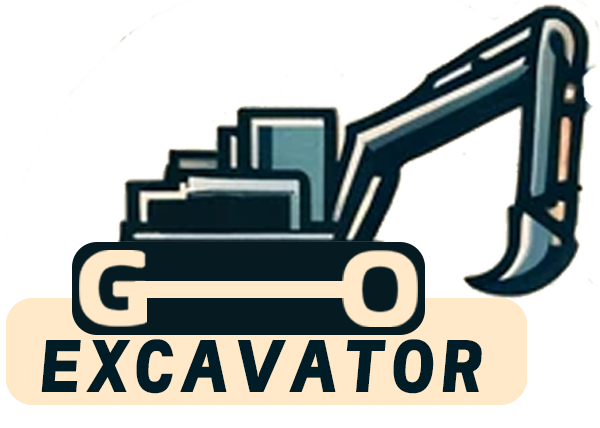
Excavators are vital machines in construction, mining, and other heavy-duty industries. Among the many types, wheeled excavators and crawler excavators are two popular variants. Each type has its strengths and weaknesses, which make them suitable for different tasks and environments. In this blog, we will explore the main differences between wheeled excavators and crawler excavators, covering aspects such as mobility, cost, stability, and applications.
What Are Wheeled Excavators?
Wheeled excavators, as the name suggests, are excavators mounted on wheels instead of tracks. These machines are versatile and can travel on roads without damaging surfaces, making them ideal for urban environments or projects that require frequent movement between sites.
Key Features of Wheeled Excavators
- Mobility: Wheeled excavators can move quickly on roads and paved surfaces, reaching speeds of up to 25 miles per hour.
- Versatility: Since they are road-friendly, these machines are commonly used in urban areas, landscaping projects, and light construction.
- Maintenance: Tires are generally easier and cheaper to maintain compared to tracks. They can be replaced faster and at a lower cost.
- Cost: Wheeled excavators tend to be more affordable upfront but may require additional investments for attachments like outriggers to improve stability.
What Are Crawler Excavators?
Crawler excavators, also known as tracked excavators, are designed with continuous tracks instead of wheels. These tracks provide enhanced stability and traction, especially in uneven or muddy terrains. Crawler excavators are typically used for heavy-duty construction projects where mobility on rough or loose ground is required.
Key Features of Crawler Excavators
- Stability: The wide tracks on crawler excavators distribute the machine’s weight more evenly, providing better stability on soft, uneven, or steep terrains.
- Traction: Crawler excavators are designed to grip the ground securely, making them the go-to choice for challenging environments like rocky or muddy sites.
- Power: These machines are often equipped with more powerful engines to handle difficult terrain and heavy lifting tasks.
- Cost: While more expensive than wheeled excavators, crawlers offer long-term savings by being durable in harsher conditions. However, maintaining the tracks can be costlier than tires.
Key Differences Between Wheeled and Crawler Excavators
1. Mobility
- Wheeled Excavators: Wheeled excavators excel in mobility on hard, flat surfaces. They can easily transition from one job site to another without requiring a trailer for transport. This makes them highly convenient in urban settings where mobility is key.
- Crawler Excavators: Crawler excavators are designed for off-road conditions and are less mobile on paved surfaces. Due to their tracks, they move slower and usually need to be transported by truck or trailer when moving between sites.
2. Terrain Adaptability
- Wheeled Excavators: Wheeled models are more suitable for smooth surfaces and lighter tasks. They may struggle on uneven, muddy, or steep terrains without additional attachments like outriggers to stabilize the machine.
- Crawler Excavators: Crawlers are specifically designed to tackle tough terrains. Their tracks provide greater stability and grip, making them the better choice for construction sites with rough, uneven, or unstable ground.
3. Speed
- Wheeled Excavators: These machines can travel faster on flat surfaces, making them more efficient for jobs that require frequent movement between sites.
- Crawler Excavators: Crawlers are slower due to the track system and are not designed for road travel. Their focus is more on power and stability than speed.
4. Stability
- Wheeled Excavators: While wheeled excavators are versatile, they are less stable compared to crawler models, especially when working on uneven ground. Outriggers are often used to enhance stability during heavy digging operations.
- Crawler Excavators: Crawler excavators provide excellent stability due to their tracks, which distribute the machine’s weight over a larger surface area. This makes them ideal for handling heavy lifting on unstable or inclined surfaces.
5. Cost and Maintenance
- Wheeled Excavators: Wheeled models generally have a lower upfront cost and are easier to maintain in terms of tire replacement. However, additional costs may arise for stabilizing attachments.
- Crawler Excavators: Crawler excavators tend to have higher initial costs and more expensive maintenance, especially when it comes to repairing or replacing tracks. However, they can offer better long-term value in projects requiring consistent performance on difficult terrain.
6. Power and Lifting Capacity
- Wheeled Excavators: Wheeled models are usually lighter and less powerful, making them ideal for light to medium-duty tasks.
- Crawler Excavators: Crawler excavators are built for heavy-duty applications, offering more power and higher lifting capacity, which makes them better suited for construction projects involving large-scale digging or lifting.

Applications for Wheeled and Crawler Excavators
Wheeled Excavator Applications
Wheeled excavators are commonly used in:
- Urban construction projects
- Roadwork and paving
- Landscaping and maintenance of parks and gardens
- Light demolition tasks
- Utility work in cities
Crawler Excavator Applications
Crawler excavators are typically used for:
- Heavy-duty construction projects
- Mining operations
- Land clearing and forestry
- Demolition of large structures
- Road construction in rural or uneven areas
Pros and Cons of Wheeled Excavators
Pros:
- Faster movement between job sites
- Suitable for urban environments
- Lower maintenance costs for tires
Cons:
- Less stable on rough terrain
- Additional attachments may be needed for stability
- Limited to lighter tasks
Pros and Cons of Crawler Excavators
Pros:
- Better stability and traction on uneven ground
- Higher lifting capacity and power
- Suitable for heavy-duty tasks
Cons:
- Slower mobility, especially on roads
- Higher maintenance costs for tracks
- More expensive upfront
Both wheeled and crawler excavators serve important roles in the construction industry, but their uses differ based on the type of terrain, mobility needs, and task complexity. Wheeled excavators are ideal for urban settings and tasks that require frequent site changes, while crawler excavators are better suited for challenging terrains and heavy-duty projects. Choosing the right type of excavator depends on the specific requirements of the job.
A Comprehensive Guide to Buying a Excavator Second Hand
Purchasing a second-hand excavator can be a cost-effective solution for your construction or landscaping needs. However, buying used machinery comes with its own set of challenges and considerations. This comprehensive guide will walk you through [...]
Comprehensive Guide to Hyundai Mini Excavators: Features and Prices
Mini excavators have become indispensable tools in the construction and landscaping industries. Hyundai Construction Equipment, a global leader in heavy machinery, offers a range of mini excavators known for their reliability, efficiency, and advanced features. [...]
How to Extend the Service Life of Excavator Parts
Excavators are indispensable machines in the construction and mining industries. They perform heavy-duty tasks that demand robust components and meticulous maintenance. Extending the service life of excavator parts not only reduces operational costs but enhances [...]
Kymron Excavators: Innovative, Sustainable Construction Machinery
In the dynamic world of construction and heavy machinery, Kymron has emerged as a game-changer. Specializing in advanced excavator technology, Kymron is redefining industry standards with its commitment to innovation, efficiency, and sustainability. Company Overview [...]
Bulldozer vs. Wheeled Excavator: Which Machine is Better for Moving Soil?
Moving soil is a fundamental task in construction, landscaping, and earthmoving projects. Choosing the right machinery for the job can significantly impact efficiency, cost, and project timelines. Two of the most commonly used machines for [...]
Why Are Small Excavators Favored? A Comprehensive Guide
In the world of construction and landscaping, efficiency and versatility are key. Among the myriad of machinery available, small excavators have risen in popularity. But what makes them so favored? Introduction to Small Excavators Small [...]




